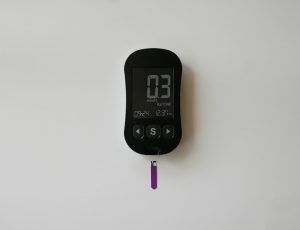Discovering Wellness with an AI Glucose Monitor
Explore my 2-week journey with an AI glucose monitor and uncover surprising insights. Discover how AI can transform your wellness today!
Initial Expectations vs. Actual Experience
Expectation: Seamless Integration with Daily Routine
When I first decided to use an AI-powered glucose monitor, I anticipated a seamless integration into my daily routine.
The promise of real-time data and AI-driven insights suggested a hassle-free experience that would effortlessly blend into my lifestyle. I expected the device to be intuitive, requiring minimal setup and maintenance.
Actual Experience: Initial Setup Challenges
Contrary to my expectations, the initial setup proved to be more complex than anticipated.
The device required a series of calibrations and app installations that were not as straightforward as advertised. While the instructions were clear, the process demanded more time and attention than I had planned, causing a slight disruption in my daily schedule.
Expectation: Accurate and Insightful Data
I expected the AI-powered glucose monitor to provide precise and insightful data, offering a comprehensive view of my glucose levels throughout the day.
The promise of AI-driven analytics suggested that I would gain valuable insights into my dietary habits and lifestyle choices, helping me make informed decisions about my health.
Actual Experience: Data Accuracy and Interpretation
The device did deliver on its promise of accurate data, but interpreting the results required a learning curve. While the AI provided helpful suggestions, understanding the nuances of the data and how it applied to my personal health required additional research and consultation with healthcare professionals.
The insights were valuable, but not as immediately actionable as I had hoped.
Expectation: Enhanced Health Awareness
One of my primary expectations was that the glucose monitor would enhance my awareness of my health, allowing me to proactively manage my glucose levels. I anticipated feeling more in control of my health, with the ability to make adjustments based on the feedback from the device.
Actual Experience: Increased Health Consciousness
Using the AI-powered glucose monitor did indeed heighten my health awareness, but it also introduced a level of anxiety.
Constant monitoring made me more conscious of fluctuations in my glucose levels, sometimes leading to over-analysis of minor changes. While the device empowered me with knowledge, it also required a balanced approach to avoid unnecessary stress.
Impact on Daily Routine
Increased Awareness of Food Choices
Using an AI-powered glucose monitor dramatically heightened my awareness of how different foods affected my blood sugar levels.
Each meal became an opportunity to learn, as the device provided real-time feedback on my glucose levels. This immediate insight encouraged me to make healthier food choices, opting for meals that maintained stable glucose levels rather than causing spikes.
For instance, I discovered that certain fruits, which I previously thought were harmless, caused unexpected glucose surges.
This led me to adjust my diet, incorporating more balanced meals with a focus on low-glycemic foods.
Enhanced Exercise Motivation
The glucose monitor also played a significant role in motivating me to exercise more regularly. Seeing the positive impact of physical activity on my glucose levels in real-time was incredibly encouraging.
It became evident that even a short walk after meals could significantly stabilize my blood sugar.
This newfound motivation led me to incorporate more physical activities into my daily routine, such as taking the stairs instead of the elevator and scheduling regular workout sessions. The tangible benefits of exercise on my glucose levels made it easier to stay committed to these changes.
Improved Sleep Patterns
One surprising revelation was the impact of sleep on my glucose levels.
The AI-powered monitor highlighted fluctuations in my blood sugar during nights of poor sleep. This insight prompted me to prioritize better sleep hygiene, understanding that restful sleep was crucial for maintaining stable glucose levels.
By establishing a consistent sleep schedule and creating a more conducive sleep environment, I noticed a marked improvement in both my sleep quality and glucose stability.
This adjustment not only benefited my overall health but also enhanced my daily energy levels.
Reduced Stress Levels
Monitoring my glucose levels with AI assistance also helped me manage stress more effectively. The data revealed that stress had a noticeable impact on my glucose levels, often causing unexpected spikes.
Armed with this knowledge, I began to incorporate stress-reducing activities into my routine, such as meditation and deep-breathing exercises.
These practices not only helped in stabilizing my glucose levels but also contributed to a more balanced and less stressful daily life. Understanding the connection between stress and glucose levels empowered me to make more mindful choices throughout the day.
Insights into Health Trends
AI-Powered Glucose Monitoring
The advent of AI-powered glucose monitors has revolutionized the way individuals track their blood sugar levels.
These devices offer real-time insights and personalized feedback, allowing users to make informed decisions about their dietary and lifestyle choices. The integration of artificial intelligence helps in predicting glucose trends and provides alerts for potential spikes or drops, enhancing the overall management of diabetes.
Data-Driven Lifestyle Adjustments
One of the most significant trends emerging from the use of AI-driven health devices is the shift towards data-driven lifestyle adjustments.
Users are now equipped with detailed analytics about how different foods, exercises, and activities affect their glucose levels. This information empowers individuals to tailor their routines to optimize their health outcomes, promoting a more proactive approach to wellness.
Personalized Health Insights
AI-powered glucose monitors provide personalized health insights that were previously unattainable with traditional monitoring methods.
By analyzing patterns and behaviors, these devices offer customized recommendations that cater to the unique needs of each user. This level of personalization is a growing trend in the health industry, as it enhances user engagement and adherence to health plans.
Enhanced User Engagement
The interactive nature of AI-powered health devices fosters greater user engagement.
Features such as gamification, goal setting, and progress tracking motivate users to stay committed to their health objectives. The ability to visualize progress and receive instant feedback encourages continuous use and helps maintain long-term health improvements.
Integration with Broader Health Ecosystems
AI-powered glucose monitors are increasingly being integrated into broader health ecosystems.
This connectivity allows for seamless data sharing with healthcare providers, enabling more comprehensive care. The trend towards interconnected health devices supports a holistic approach to health management, where all aspects of a user’s health are considered in unison.
Future Considerations and Recommendations
Integration with Other Health Metrics
As AI-powered glucose monitors evolve, integrating them with other health metrics could provide a more comprehensive overview of an individual’s health.
Combining glucose monitoring with data from fitness trackers, sleep monitors, and dietary logs can offer insights into how various lifestyle factors influence blood sugar levels. This holistic approach could lead to more personalized and effective health recommendations.
Data Privacy and Security
With the increasing use of AI in health monitoring, ensuring data privacy and security is paramount.
Users must be assured that their sensitive health data is protected against unauthorized access and breaches. Future developments should focus on enhancing encryption methods and providing users with clear, transparent information about how their data is used and stored.
Improving User Experience
While AI-powered glucose monitors offer advanced features, user experience remains a critical factor for widespread adoption.
Simplifying device setup, improving app interfaces, and providing clear, actionable insights can enhance user satisfaction. Additionally, offering robust customer support and educational resources can help users make the most of these technologies.
Affordability and Accessibility
To ensure that AI-powered glucose monitors benefit a broad audience, addressing affordability and accessibility is crucial.
Manufacturers should consider pricing strategies that make these devices accessible to individuals across different socioeconomic backgrounds. Partnerships with healthcare providers and insurance companies could also help in reducing costs for end-users.
Collaboration with Healthcare Professionals
For AI-powered glucose monitors to be truly effective, collaboration with healthcare professionals is essential.
These devices should complement traditional medical advice rather than replace it. Encouraging healthcare providers to incorporate AI-driven insights into their practice can lead to more informed treatment plans and better patient outcomes.
FAQ
Q1: How quickly can I expect to see results from using an AI-powered glucose monitor?
A1: The timing of results can vary depending on individual health conditions and lifestyle factors. However, most users begin to notice insights and patterns within the first few days of consistent use. The AI-powered technology analyzes glucose levels in real-time, providing immediate feedback and recommendations. This allows users to make informed dietary and activity choices that can lead to noticeable changes in glucose management within the two-week period.
Q2: What are some common concerns about implementing an AI-powered glucose monitor into daily life?
A2: One common concern is the ease of integration into daily routines. Many people worry about the learning curve associated with new technology. However, most AI-powered glucose monitors are designed with user-friendly interfaces and offer step-by-step guidance. Another concern is data privacy, as users want to ensure their health information is secure. Reputable devices typically have robust security measures in place to protect user data. Lastly, some individuals may be concerned about the accuracy of AI-generated insights, but these devices are generally tested for reliability and are often used in conjunction with professional medical advice.
Q3: Are there any lifestyle changes required when using an AI-powered glucose monitor?
A3: While the monitor itself does not require lifestyle changes, it does provide insights that may encourage users to adjust their habits for better glucose management. Users might find themselves more mindful of their diet, exercise, and stress levels based on the data and recommendations provided by the device. The goal of the monitor is to empower users with information that can lead to healthier choices, but it does not mandate specific lifestyle changes. It’s important to consult with a healthcare professional when considering significant adjustments to diet or exercise routines.
Takeaway
“Ready to boost your well-being? Start by incorporating a simple new habit mentioned in this article. Share it with your friends to spread the positivity or dive deeper into reputable resources like WHO for more health insights. Your journey to a healthier lifestyle starts with small steps. Let’s make a positive change together!”











Comments